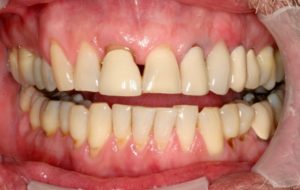The Importance of Occlusion in Comprehensive Dentistry
Changing up your general approach to diagnostics and patient exams is a real struggle. That’s especially true if you are already providing exceptional service and your patients are quite content with your care. But change is a good thing and that’s why we believe you should understand the importance of occlusion and add it to your oral health toolbox if you haven’t yet.
Here’s why:
Why Occlusion is Key to Comprehensive Dentistry
With all the responsibilities of dentistry combining to make this profession busy and challenging, it’s a headache even to consider adding a new element like occlusion to your process. But the reality is that it may be more detrimental to ignore than it is time consuming to implement.
Patients who have higher functional risk (occlusal risk) can break or wear down their teeth prematurely, can break or cause restorative dentistry like crowns, fillings, or veneers to fail early, and can also be at risk of developing acute or chronic TMD symptoms. This includes muscle pain, headaches, and a restricted opening that could prevent them from eating their favorite foods.
Figuring out a patient’s occlusal risk is equally as important as figuring out caries risk or risk for periodontal disease if you take a comprehensive approach to maintaining oral health. Unmanaged occlusal risk can compromise a patient’s function and long-term esthetics.
There are many good reasons not to pay attention to occlusion, but they can be bypassed with proper training and good advice. Your reasoning may be that you don’t know how to do an occlusal risk assessment. Most of us are skilled at assessing cavity or periodontal risk, but not occlusion.
We also stumble with the barrier of incorporating occlusion into the time we have for a comprehensive exam. And then how do we get compensated for it? That’s exactly the kind of eye-opening learning on assessing and integrating occlusion that can you can get from our CMS courses on functional dentistry.
Check out the first post in a three-part blog series on why occlusion matters here. What are your thoughts on comprehensive dentistry? Please let us know!


